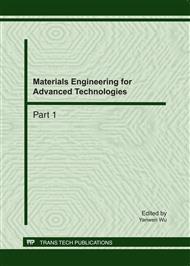p.691
p.697
p.701
p.707
p.712
p.718
p.723
p.727
p.733
Engine Room Monitoring System Design for Aging Vessels in Coastal Waters
Abstract:
In order to improve the engine room monitoring level of aging ship in coastal waters, to reduce engineers’ work load and to improve the supervision of shipping companies, the present study designs an engine room monitoring system by using VC++ programming technique, SQL Sever database technology, CAN Bus and CDMA 2000 network. The system incorporates such functions as data collection, data storage, interface display and operation, as well as wireless transmission, etc. Application results show that the system is stable, easy to use and incurs a low modifying cost. It facilitates both engineers’ timely control of the engine room status and shipping companies’ uniform supervision of the vessel. Thus the efficiency is improved and ship’s safe navigation is ensured.
Info:
Periodical:
Pages:
712-717
Citation:
Online since:
June 2011
Authors:
Keywords:
Price:
Сopyright:
© 2011 Trans Tech Publications Ltd. All Rights Reserved
Share:
Citation:


